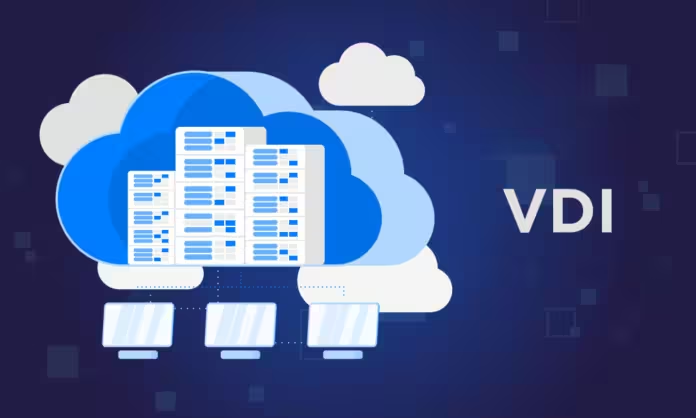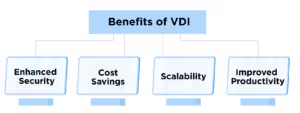In today’s fast-evolving digital landscape, businesses are constantly seeking innovative ways to streamline operations, enhance security, and increase employee productivity. One strategy that is gaining popularity is virtual desktop infrastructure (VDI). This technology enables users to access desktops and applications from any device, anywhere, by hosting these resources on a centralized server. For organizations with remote or hybrid workforces, VDI offers a flexible, secure, and scalable alternative to traditional desktop environments.
This guide will walk you through the essential aspects of Virtual Desktop Infrastructure, including its benefits, challenges, and best practices to help your business leverage this powerful tool.
What is Virtual Desktop Infrastructure (VDI)?
The practice of running a desktop operating system, such as Windows, within a virtual machine housed on a central server is known as virtual desktop infrastructure, or VDI. Users can access their virtual desktops from various devices such as laptops, tablets, or thin clients Businesses can benefit from flexibility in deployment as VDI can be set up in the cloud or on-premises.
Unlike traditional setups where desktops are physically installed on individual machines, VDI allows IT teams to manage and maintain desktops centrally, ensuring consistent performance, streamlined updates, and improved security.
Benefits of Virtual Desktop Infrastructure
Implementing Virtual Desktop Infrastructure in modern workplaces provides several advantages, making it an attractive solution for businesses looking to improve operational efficiency and flexibility.
- Enhanced Security
One of the primary benefits of VDI is its ability to secure sensitive data. Since all desktops and applications are hosted on centralized servers, no data is stored locally on end-user devices. This significantly reduces the risk of data breaches or loss due to device theft, malware attacks, or unauthorized access.
VDI environments can also implement advanced security protocols such as multi-factor authentication (MFA), encryption, and role-based access control, further bolstering security measures.
- Cost Savings
Businesses frequently discover that, despite the initial investment required to set up VDI, it ends up being more economical in the long run. Centralized management of desktops reduces hardware costs since users can work from low-cost devices such as thin clients or older computers. Additionally, IT teams spend less time on routine maintenance, troubleshooting, and updates, resulting in operational cost savings.
- Scalability
Another significant benefit of VDI is its scalability. Whether you’re expanding your team or incorporating a temporary remote workforce, VDI allows businesses to quickly add or remove users without needing to purchase or configure new hardware. This makes it easier for organizations to adapt to changing business needs and employee demands.
- Improved Productivity
With the help of virtual desktop infrastructure (VDI), workers may access their work environment whenever and from any device, giving them more flexibility. This is especially beneficial for companies that use hybrid or remote work arrangements. Employees can maintain productivity even when they’re away from the office, leading to improved job satisfaction and collaboration across geographically dispersed teams.
Challenges of Virtual Desktop Infrastructure
While Virtual Desktop Infrastructure offers significant benefits, it also presents certain challenges that organizations need to consider before implementation.
- Initial Setup Costs
Setting up a VDI environment can involve significant upfront expenses, especially for businesses transitioning from traditional desktop models. The infrastructure required to support VDI, including servers, storage, and network bandwidth, may require a sizable investment. Additionally, licensing fees for virtual desktop software can also contribute to the cost.
- Performance Issues
VDI performance is heavily dependent on network reliability and server capacity. If the infrastructure isn’t optimized or bandwidth is insufficient, users may experience latency, slow application load times, or interruptions, all of which can negatively impact productivity. Ensuring that your VDI environment is properly designed and equipped to handle your organization’s workload is critical for avoiding performance issues.
- Complexity of Management
While VDI simplifies desktop management in many ways, it can also introduce new layers of complexity. IT teams must manage virtual machines, security protocols, and user access, often requiring advanced technical skills. A poorly managed VDI environment can lead to disruptions, data loss, or security vulnerabilities, making it essential for businesses to have well-trained IT personnel or consult with VDI experts.
Best Practices for Implementing Virtual Desktop Infrastructure
To maximize the benefits of Virtual Desktop Infrastructure while minimizing challenges, businesses should follow these best practices:
- Start with a Clear Plan
Before implementing VDI, it’s crucial to define your business objectives and assess the specific needs of your workforce. Consider factors such as user location, the types of applications needed, and data security requirements. This will help you determine the best deployment model—whether on-premises, cloud, or hybrid—and guide your overall VDI strategy.
- Optimize Infrastructure
To avoid performance bottlenecks, ensure that your server and network infrastructure can handle the demands of your virtual desktops. Invest in high-performance servers, storage solutions, and sufficient bandwidth to prevent latency and downtime. Consider implementing load balancing and monitoring tools to ensure smooth performance during peak usage times.
- Prioritize Security
Any VDI deployment should have security as its primary concern. Implement robust security measures such as MFA, encryption, and strict access controls. Update your operating systems and VDI software frequently to guard against the newest attacks. Additionally, ensure that all employees are trained in the best security practices when accessing virtual desktops.
- Provide IT Support and Training
VDI environments can introduce new complexities for end users, especially those unfamiliar with virtual desktops. Providing comprehensive IT support and training ensures that employees can navigate the system efficiently, reducing downtime and frustration.
Conclusion
Virtual Desktop Infrastructure (VDI) is transforming how modern workplaces operate by providing flexible, secure, and cost-effective desktop solutions. By understanding the benefits and challenges of VDI and following best practices for implementation, businesses can create an agile and secure work environment that meets the demands of today’s workforce. With proper planning and infrastructure optimization, VDI can significantly enhance productivity and efficiency, enabling businesses to thrive in an increasingly digital world.
Read More:


